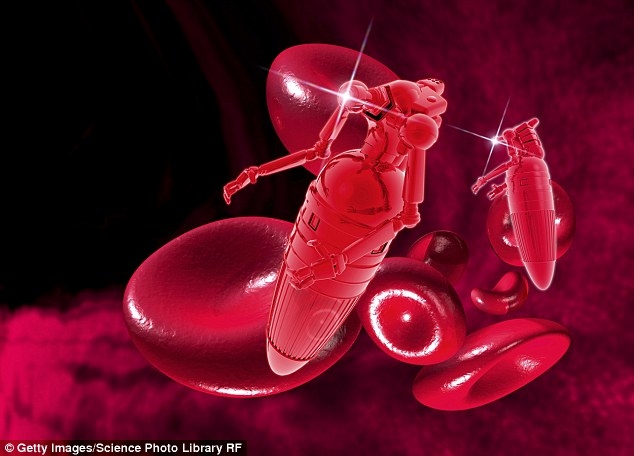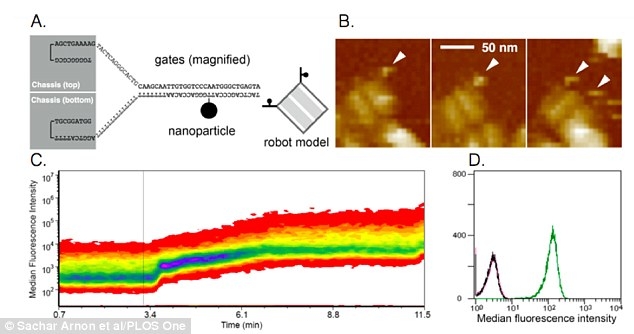
The picture shows the nano robots
Researchers from the University of Ramat Ganbaraylan in Israel and the Herzliya Interdisciplinary Center in Israel used DNA folding structures to create nanoshell robots with hollow shell structures. With this type of nanobot, doctors can control the release of drugs over time, releasing only small doses of drugs at a time. They claim that this technology can be used to treat brain diseases such as schizophrenia, depression, and attention deficit disorder.
The drug is first chemically treated, using iron oxide particles to "lock in" the drug, and then placed in the hollow shell of the nanobot. Next, an electromagnet is used to heat and destroy the shell of the DNA structure, releasing the drug. Under the leadership of Dr. IDo Bachelet, the chief scientist of nanotechnology, they have been able to use human brain waves to control this process.
In order to achieve brainwave control, they trained a computer algorithm to probe whether the human brain is in a complex change of thinking activity. When a change in brain activity is found, the computer will trigger an electromagnet to unlock the nanobots injected into the quail. The researchers released a fluorescent protein in the carp to track the release rate.
A researcher who is writing the "Journal of Public Libraries" said: "As a theoretical demonstration, we have demonstrated the activity of DNA robots. Using the brain to handle complex changes triggers cell effects in the insects of the target insect."

The researchers injected nanobots into the quail to test their techniques, using sensors to detect changes in the human brain's activity, thereby activating the electromagnet and releasing the nanobot's contents.

The nanobots in Figures A and B release fluorescent particles in the gills. Figures C and D show how the release process is controlled according to the increased mental activity of the human brain in solving complex mathematical problems.
This technique can respond to individual's cognitive state of mind and thus control the on-line switch of active molecules. Researchers claim that this technology has been modified to be applied to humans to observe changes in brain activity during schizophrenia, depression, or seizures.
The patient was injected with a drug-carrying nanobot and brainwave activity was monitored through a cap with a sensor. When a specific pattern of brainwave activity occurs, the electromagnet in the cap can be triggered to open the hollow shell of the nanobot and release the drug.

This technique can detect changes in brain activity and triggers nanobots to release anti-epileptic medications in the brain when they find signs of seizures.
Sachar Arnon, the first author of the paper from the Interdisciplinary Center, said that the robot can also be adjusted according to your needs. For example, in the treatment of epilepsy, it can monitor the signs of attacks from brain activity and immediately release antiepileptic drugs from the nanobots.
Sachar Arnon added that this technology may also be applied to areas outside medicine. “Imagine if you can get the exact amount of alcohol, keep you happy and not drunk. I think our research has just begun.â€
Via:Daily Mail
Xinzhi created the public number of the robot under the leadership of Lei Feng Network (search for "Lei Feng Net" public number) . We are concerned about the status quo and future of robots, and related industries combined with robots. Interested friends can add micro signal AIRobotics, or directly scan the QR code below to follow!
